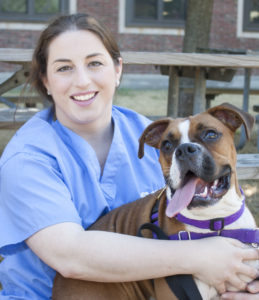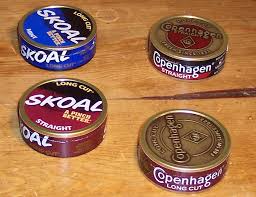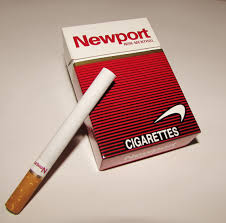-
Adopt
-
Veterinary Care
Services
Client Information
- What to Expect – Angell Boston
- Client Rights and Responsibilities
- Payments / Financial Assistance
- Pharmacy
- Client Policies
- Our Doctors
- Grief Support / Counseling
- Directions and Parking
- Helpful “How-to” Pet Care
Online Payments
Referrals
- Referral Forms/Contact
- Direct Connect
- Referring Veterinarian Portal
- Clinical Articles
- Partners in Care Newsletter
CE, Internships & Alumni Info
CE Seminar Schedule
Emergency: Boston
Emergency: Waltham
Poison Control Hotline
-
Programs & Resources
- Careers
-
Donate Now
 By Jordana Fetto, DVM
By Jordana Fetto, DVM
angell.org/emergency
emergency@angell.org
781-902-8400
MSPCA-Angell West, Waltham
While our dogs, cats and other companion animals are not running out to the corner store to purchase a pack of cigarettes, they are at risk for exposure to nicotine, and therefore at risk for nicotine toxicity, due to products being present in their environment. The most common mode of nicotine exposure in animals is ingestion- especially of nicotine gum and chewing tobacco due to the palatability of these products. The concentration of nicotine in products ranges from 2mg-114mg, with gum having the least, patches having the most, and cigars containing five times the concentration of cigarettes.
 So why is nicotine harmful to our pets? Nicotine mimics a chemical, acetylcholine, which is naturally produced in the body and is responsible for stimulating nerves. As a result, low levels of nicotine exposure result in overstimulation of the nervous system while high levels of exposure can overwhelm the nervous system and prevent nerves from functioning appropriately. Thus, symptoms of low-dose exposure or the initial signs of high-dose exposure include excitement, tremors, a drunken unsteady gait, convulsions, drooling, high blood pressure and a low heart rate. As more of the nicotine is absorbed by the body in high-dose exposure, symptoms transition to lethargy, depression, low blood pressure, normal or elevated heart rate, paralysis, respiratory depression or arrest, and death. Additionally, nicotine strongly activates the brain’s vomiting center resulting in spontaneous vomiting. This is a beneficial effect of nicotine as this will hopefully result in the animal expelling the nicotine product it ingested preventing further absorption of nicotine and therefore reduce the degree of toxicity.
So why is nicotine harmful to our pets? Nicotine mimics a chemical, acetylcholine, which is naturally produced in the body and is responsible for stimulating nerves. As a result, low levels of nicotine exposure result in overstimulation of the nervous system while high levels of exposure can overwhelm the nervous system and prevent nerves from functioning appropriately. Thus, symptoms of low-dose exposure or the initial signs of high-dose exposure include excitement, tremors, a drunken unsteady gait, convulsions, drooling, high blood pressure and a low heart rate. As more of the nicotine is absorbed by the body in high-dose exposure, symptoms transition to lethargy, depression, low blood pressure, normal or elevated heart rate, paralysis, respiratory depression or arrest, and death. Additionally, nicotine strongly activates the brain’s vomiting center resulting in spontaneous vomiting. This is a beneficial effect of nicotine as this will hopefully result in the animal expelling the nicotine product it ingested preventing further absorption of nicotine and therefore reduce the degree of toxicity.
The degree to which our pets are affected by nicotine depends on how much is ingested and the weight of the animal. Clinical signs have been reported at doses as low as 1mg/kg (milligram per kilogram of body weight) and the median lethal dose in dogs is 9.2mg/kg. Since nicotine is readily absorbed through the gastrointestinal tract, mucous membranes, and skin, symptoms are observed within 1 hour of exposure. It is reported that humans completely excrete nicotine from the body within 16 hours after ingestion/inhalation. Furthermore, excretion occurs solely through the kidneys and is enhanced when the urine is acidic. The same is thought to be true for our companion animals.
 Prognosis for nicotine toxicity depends significantly on the exposure dose. For instance, low-dose exposure has a good to excellent prognosis while the high-dose exposure is poor. However, if pets can be stabilized for the first 4 hours after intoxication for high-dose exposures, their prognosis for complete recovery is significantly improved.
Prognosis for nicotine toxicity depends significantly on the exposure dose. For instance, low-dose exposure has a good to excellent prognosis while the high-dose exposure is poor. However, if pets can be stabilized for the first 4 hours after intoxication for high-dose exposures, their prognosis for complete recovery is significantly improved.
You just witnessed your pet eat several cigarettes or lick the patch off your arm, now what do you do? The first step is to contact poison control (ASPCA poison control at 888-426-4435 – a fee is associated with this call. The ASPCA is not associated with the MSPCA-Angell) to determine if the amount your pet ingested was toxic. Since an antidote for nicotine toxicity does not exist, the mainstay of treatment is to prevent absorption, promote excretion of the nicotine which has already been absorbed and provide medical treatment for symptoms your pet is displaying. Thus, if a toxic dose was ingested the next step is to seek emergent veterinary attention so that we can perform decontamination. This is when we induce vomiting and administer activated charcoal, if it is safe to do so, in order to reduce the amount of nicotine absorbed by your pet’s body. Next, your pet would be admitted to the hospital for IV fluids and products to acidify the urine (i.e. cranberry extract products) to enhance elimination of the nicotine. Your pet’s vital signs would be monitored (i.e. blood pressure, heart rate and breathing rate) and medications would be administered (i.e. muscle relaxants for tremors and anti-nausea medications for vomiting) or oxygen supplementation/mechanical ventilation would be supplied as needed. Hopefully, in 24-48 hours your pet would make a complete recovery and would be ready to be discharged from the hospital.